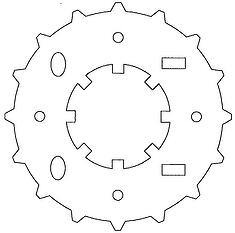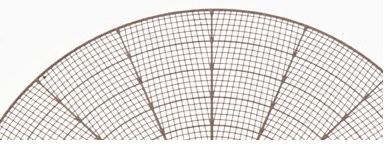Do You Know Manufacturing's Best Kept Secret?
You may be aces on the intricacies of stamping, laser, plasma, waterjet and EDM. But what do you know about the other metal fabrication process that is solving problems for engineers in many industries every day? “Which one?” you ask?
Photochemical machining….or etching ,if you prefer. Yes, we do it with acid.
Not many people have an instant mental picture of the etching process. Yet, many readily “get” stamping, laser, water, and plasma cutters for creating metal parts.
Here’s a 3 minute video that will provide a mental framework for you. I’ll wait.
So, let’s review:
- Six steps: clean, coat, image, develop, etch, strip.
- Images are exposed on the metal through the phototool, essentially a stencil.
- Developed photoresist protects the metal that becomes the parts.
- Parts are produced in sheets containing as many copies as will fit.
- The metal is not subject to any mechanical or thermal distortions.
When to Use Photo Etching?
- Metal thickness from .0005” to .040” (white metal); .065” (red metal) or .080” (aluminum).
- Many popular alloys of steel, nickel and copper, as well as aluminum, molybdenum and silver.
- Quantities from dozens to tens of thousands…and sometimes more.
- Dimensional tolerances within +/-15% of metal thickness.
- Almost anytime, really.
Using photo etching, the test part shown below (2.7” diameter on .020” stainless) is no more difficult or costly to make than a simple washer and the phototool is less than $300 and available in one day.

We did a cost study on this part, comparing etching, stamping, laser and water jet. The results are free and you can get the report here. We were surprised, too.
What are the Design Limitations for Chemical Etching?
- Holes, or the minor dimensions of slots, must be at least 110% of metal thickness
- The metal between holes or slots should be at least equal to metal thickness (there are times we can shade this a little.)
- Minimum dimensional tolerances are +/- 15% of metal thickness.
- Minimum radius is 70% of metal thickness.
Easy. You can get the free Comprehensive Guide here.
Oh, and, we only charge you for the first hole. The rest of them, no matter how many, are FREE. (Completely FREE.)
Photo etching can produce part geometries that would be extremely difficult, if even possible, with stamping or punching. Laser and plasma cutting are more flexible in this regard, however every feature and every hole must be addressed in a linear way, as if tracing with a pencil.
Simplifying complexity is perhaps one of photo etching's greatest advantages. The process is utterly indifferent to odd shapes, multitudes of holes or other less ordinary features.
Photo chemical machining has been call "manufacturing's best kept secret." Now, you’re in on it, too.


